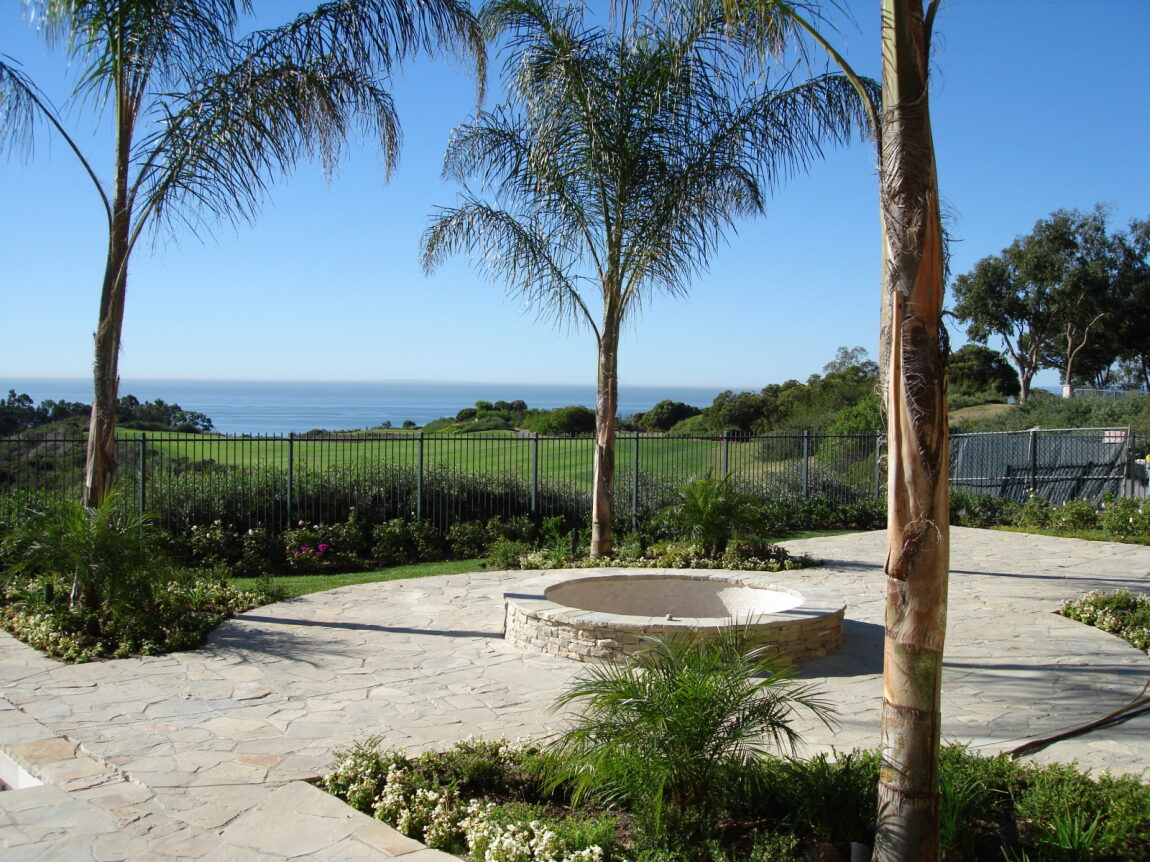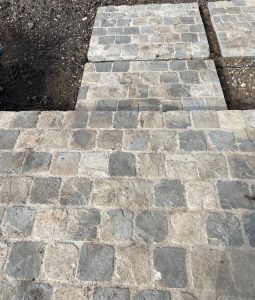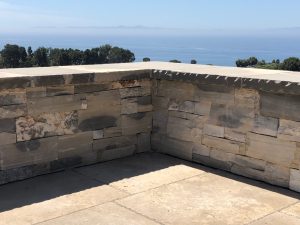A flagstone walkway is an elegant addition to any outdoor space, enhancing both the aesthetic and functionality of your landscape. Installing flagstone on a concrete base offers long-lasting durability, as the stones are less likely to shift or settle over time. Whether you’re creating a garden path or a front entrance walkway, following the correct installation process will ensure a stable and beautiful result that can endure heavy foot traffic and changing weather conditions.
In this guide by Lompoc Stone, we will walk you through how to properly install a flagstone walkway in concrete, from preparation to maintenance.
Why Use Concrete as a Base for a Flagstone Walkway?
Using concrete as the base for your flagstone walkway provides exceptional stability and durability compared to other installation methods.

Enhanced Stability and Longevity
Concrete offers a solid foundation that prevents flagstones from shifting or sinking over time. This is particularly important in areas that experience freezing and thawing cycles, which can cause movement in other types of bases like gravel or sand. By securing your flagstones in concrete, you reduce the risk of uneven surfaces and create a walkway that can withstand years of use.
This method is ideal for high-traffic areas, such as entryways or frequently used garden paths. Once the stones are installed and set in concrete, your walkway will require minimal maintenance, making it a practical and attractive long-term investment.
A Clean, Polished Look
Installing flagstone on a concrete base allows for a sleek and polished appearance. The stones can be arranged with precision, creating uniform gaps that can be filled with mortar for a clean finish. This approach not only enhances the aesthetic appeal of your walkway but also prevents weed growth and water pooling, keeping your outdoor space neat and functional.
Tools and Materials Needed to Install a Flagstone Walkway
Gathering the right tools and materials in advance will streamline the installation process and help you achieve professional results.
Essential Tools
You’ll need several tools to successfully install a flagstone walkway on a concrete base. These include a mixing paddle or concrete mixer for preparing the concrete, a trowel for spreading mortar, and a rubber mallet to gently secure the stones in place. A measuring tape and level will help ensure that the walkway is even and properly aligned.
For cutting flagstone pieces to fit your design, a stone chisel or angle grinder is essential. Don’t forget protective equipment, such as gloves, goggles, and a dust mask, to stay safe while handling stone and concrete.
Required Materials
The primary materials include flagstone, concrete mix, and mortar. Select flagstone with a thickness of at least 1.5 inches for durability. For the concrete base, choose a high-strength concrete mix designed for outdoor use. You’ll also need a bonding agent to improve adhesion between the flagstones and the concrete.
Additionally, prepare sand or gravel as a sub-base material if your site requires extra drainage beneath the concrete. Having all materials ready before you start will save time and prevent interruptions during the installation process.
Preparing the Site for Your Flagstone Walkway
Proper site preparation is critical for a durable flagstone walkway. This step involves excavating the area and laying a solid base.
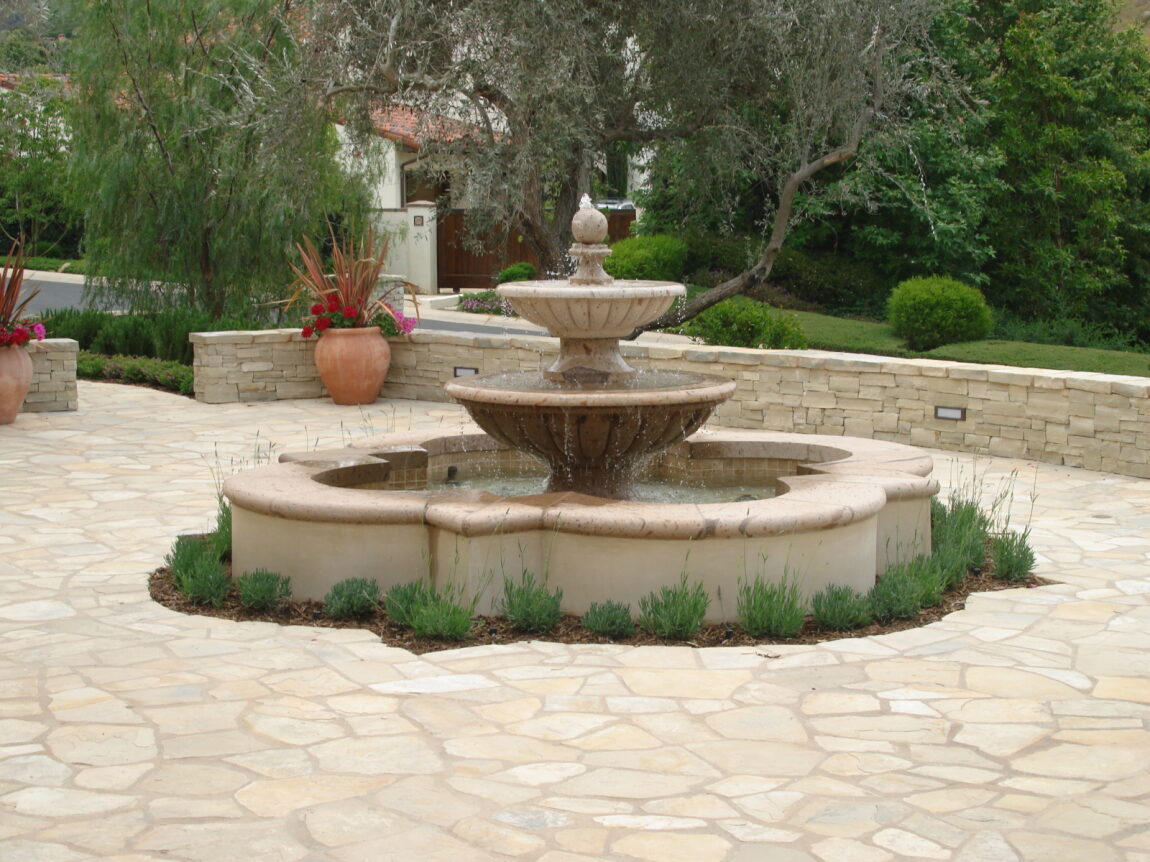
Marking and Excavation
Begin by marking the path of your walkway with stakes and string. Ensure that the path is wide enough to accommodate comfortable foot traffic, typically at least 3 feet. Once the design is outlined, excavate the area to a depth of about 6 to 8 inches.
Remove all grass, roots, and debris to create a clean foundation. If your walkway will be in an area with poor drainage, consider adding a 2- to 3-inch layer of gravel to improve water runoff beneath the concrete base. Compact the soil and gravel thoroughly with a tamper to create a level surface.
Installing the Formwork
Formwork, typically made from wooden planks, is used to define the edges of your flagstone walkway and hold the concrete in place as it cures. Set the formwork along the path’s edges, ensuring it is level and securely anchored. Use stakes to hold the planks in place, and adjust them as needed to follow the walkway’s curves or straight lines.
Pouring the Concrete Base
The concrete base is a crucial element that supports the flagstone and prevents movement.
Mixing and Pouring Concrete
Mix the concrete according to the manufacturer’s instructions, aiming for a consistency that is easy to spread but not too runny. Pour the concrete into the prepared area, spreading it evenly with a trowel or rake. Work in sections to maintain control over the pouring process and avoid gaps or air pockets.
Use a screed board to level the concrete, ensuring a smooth and even surface. Allow the concrete to partially set for about an hour before moving on to the next step.
Adding a Bonding Layer
Before placing the flagstones, apply a bonding layer to the surface of the concrete. This can be achieved by spreading a thin layer of wet mortar or using a specialized bonding adhesive. The bonding layer helps the flagstones adhere securely to the concrete, reducing the risk of future movement or detachment.
Arranging and Securing the Flagstones
With the concrete base in place, it’s time to arrange and secure the flagstones to create your flagstone walkway.
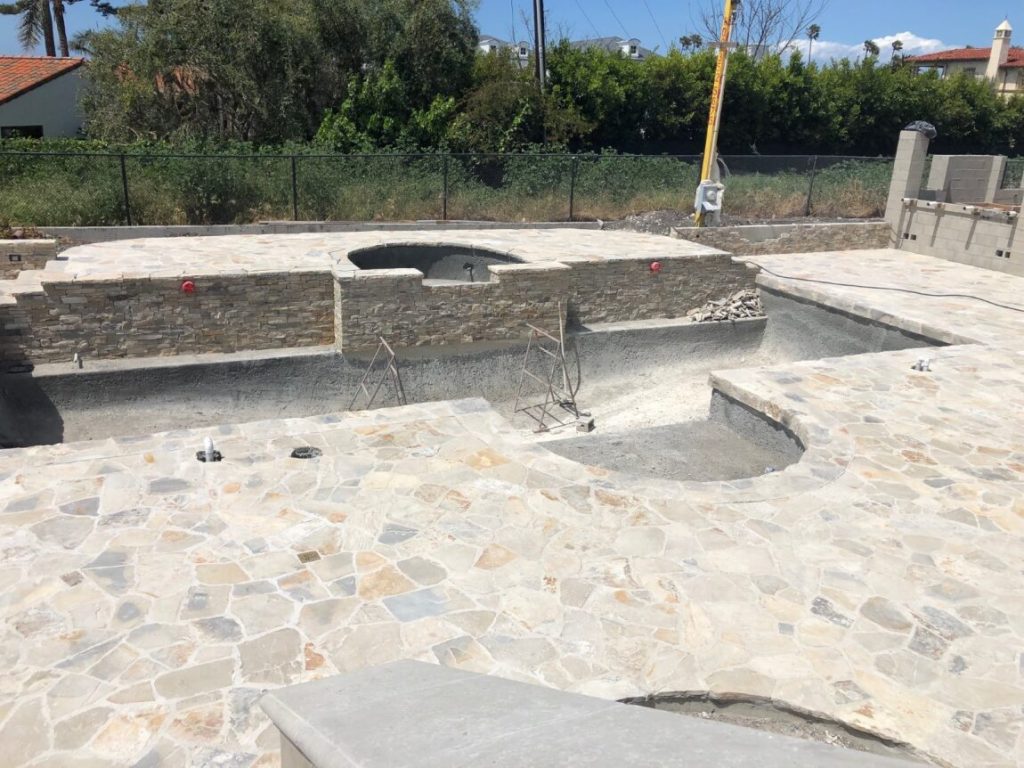
Designing the Layout
Lay out the flagstones in your desired pattern before securing them with mortar. Start with the largest stones in prominent areas, then fill in the gaps with smaller pieces. Aim for a natural, irregular arrangement that maintains visual interest. Leave consistent joints between the stones, typically about half an inch to one inch wide.
Take your time to experiment with different layouts, adjusting the stones to achieve the most balanced and aesthetically pleasing result.
Mortaring the Stones
Apply a layer of mortar to the back of each flagstone before placing it on the bonding layer. Use a rubber mallet to gently tap the stone into place, ensuring it is level with the surrounding stones. Once all the stones are set, fill the joints with mortar, smoothing it with a trowel to create a clean finish.
Allow the mortar to cure for at least 24 to 48 hours before walking on the walkway. During this time, protect the area from rain and foot traffic to prevent disruptions in the curing process.
Maintaining Your Flagstone Walkway
A flagstone walkway can last for decades with minimal maintenance if properly cared for.
Regular Cleaning
Sweep your walkway regularly to remove dirt, leaves, and debris. For deeper cleaning, use a mild detergent and water to scrub the stones. Avoid using harsh chemicals, as they can damage the stone and mortar.
Inspecting and Resealing
Inspect your walkway periodically for cracks, loose stones, or signs of wear. Apply a stone sealer every 2 to 3 years to protect the flagstones from moisture, stains, and weathering. Sealers enhance the natural color of the stone while preventing water penetration, which can cause erosion over time.
FAQs
1. How thick should flagstones be for a walkway?
Flagstones should be at least 1.5 to 2 inches thick to provide durability and resist cracking under foot traffic.
2. Can I install flagstone without concrete?
Yes, flagstone can also be installed on a gravel or sand base, but a concrete base offers superior stability and longevity.
3. How long does it take for mortar to cure?
Mortar typically takes 24 to 48 hours to cure fully. Avoid walking on the walkway during this time.
4. Do I need to seal my flagstone walkway?
Sealing is recommended to protect the stones from stains, moisture, and weather damage. Reapply every 2-3 years.
5. Can I install a flagstone walkway myself?
Yes, but it requires careful planning, the right tools, and attention to detail. Hiring a professional may ensure a higher-quality result.
Conclusion
Installing a flagstone walkway on a concrete base provides lasting durability and a stunning outdoor feature. By following these steps—preparing the site, pouring the base, arranging the stones, and maintaining the walkway—you can achieve a functional and beautiful pathway that enhances your landscape for years to come.At Lompoc Stone, we offer a wide selection of premium natural stone products to help bring your walkway vision to life. Contact us today to explore our collection of high-quality flagstone and start your next project with confidence!

